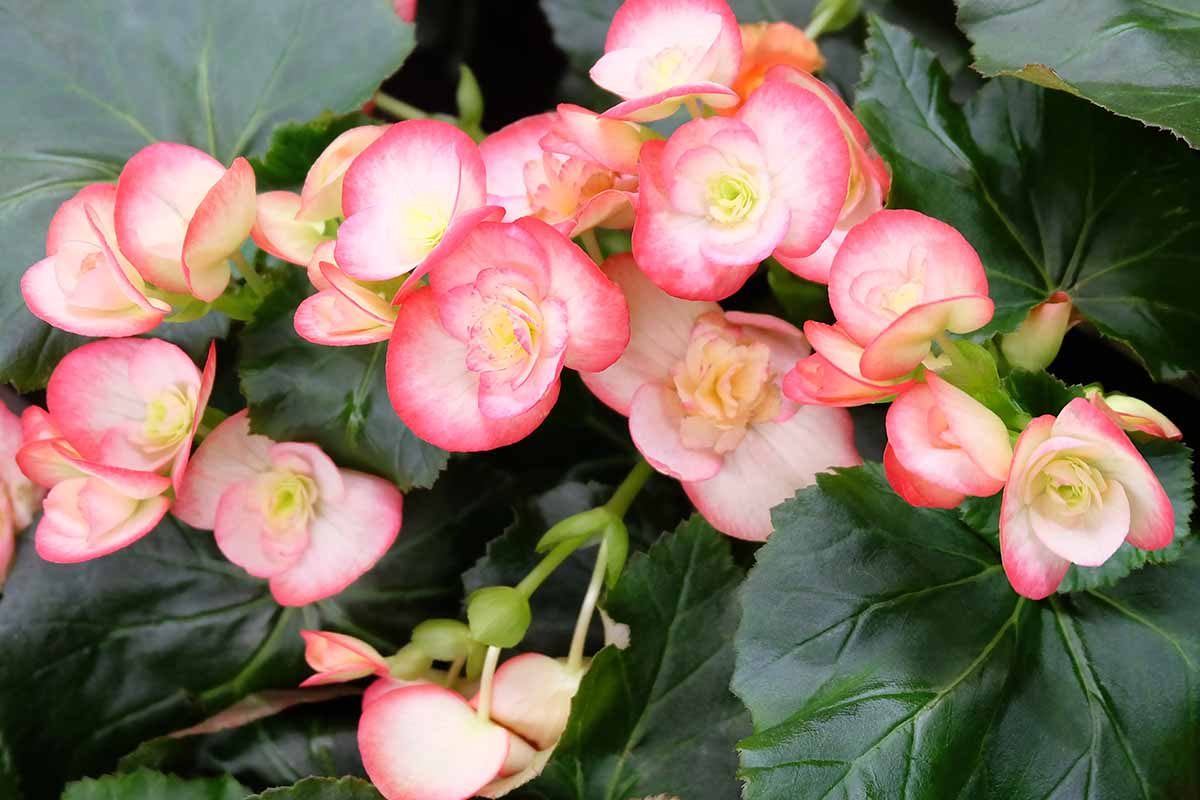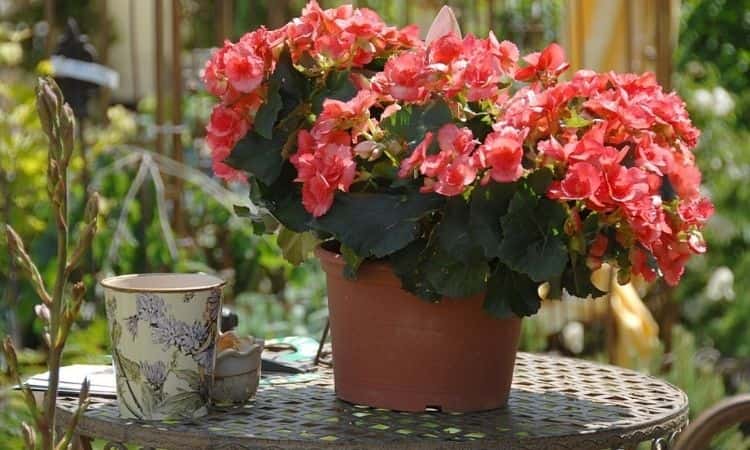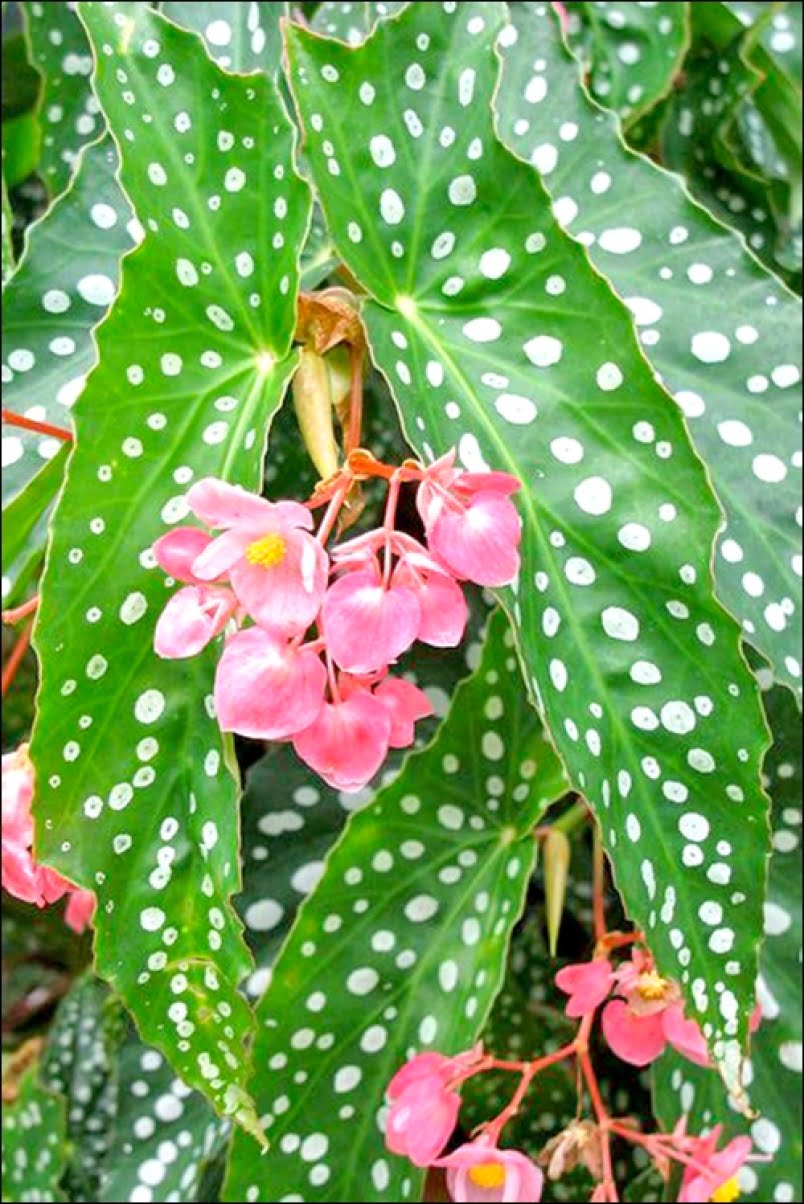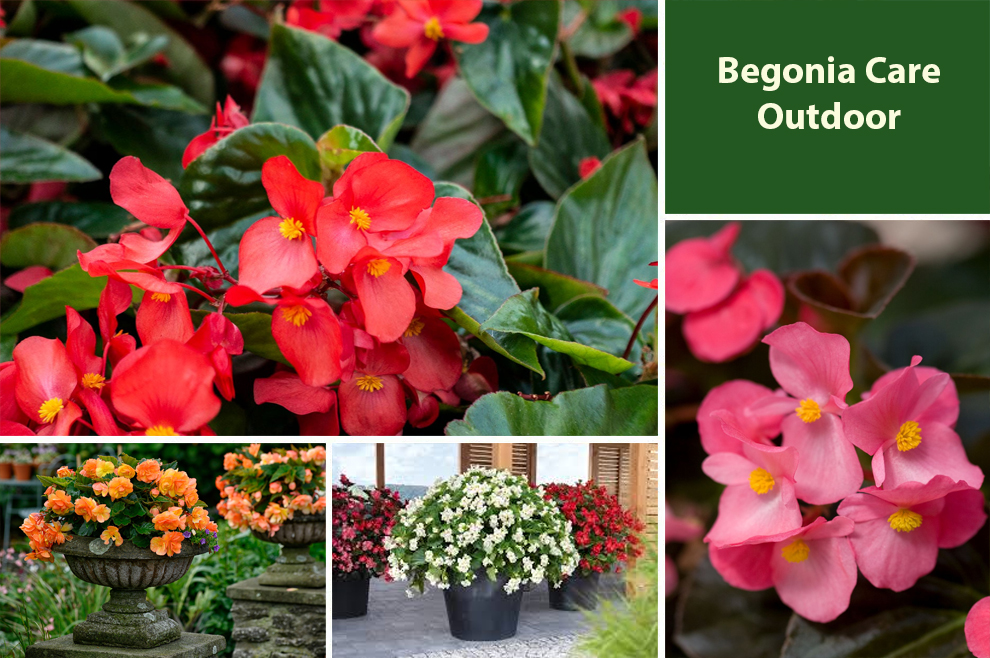Unlocking the Secrets to Begonia Success: Understanding their Needs
When it comes to learning how to take care of begonias, understanding their specific needs is crucial for providing the best care. Begonias are a diverse group of plants, with over 1,800 species, each with unique requirements. However, most begonias share certain needs that must be met to ensure they thrive. Light, temperature, and humidity are three essential factors to consider when caring for begonias.
Begonias generally require bright, indirect light to photosynthesize and grow. However, some species can tolerate low light conditions, while others require full sun. Understanding the specific light requirements of your begonia is vital to prevent scorching or inadequate growth. Temperature is another critical factor, as most begonias prefer daytime temperatures between 65-75°F (18-24°C) and nighttime temperatures 5-10°F (3-6°C) lower. Humidity is also essential, as begonias thrive in environments with a relative humidity of 40-60%.
By understanding these fundamental needs, you can create an environment that fosters healthy growth and encourages your begonias to flourish. Whether you’re a seasoned gardener or a beginner, learning how to take care of begonias starts with recognizing their unique requirements. By providing the right conditions, you’ll be well on your way to becoming a begonia expert and enjoying the beauty and elegance these plants bring to your home or garden.
How to Provide the Perfect Environment for Your Begonias
Creating an ideal environment for your begonias is crucial for their growth and well-being. When learning how to take care of begonias, it’s essential to consider the specific needs of your plants. Lighting, temperature control, and humidity management are critical factors to consider when creating an optimal environment for your begonias.
Lighting is one of the most critical factors to consider when creating an environment for your begonias. Most begonias require bright, indirect light to photosynthesize and grow. However, some species can tolerate low light conditions, while others require full sun. To provide the right lighting conditions, consider using grow lights or placing your begonias near an east- or west-facing window.
Temperature control is also vital for begonias. Most species prefer daytime temperatures between 65-75°F (18-24°C) and nighttime temperatures 5-10°F (3-6°C) lower. To maintain optimal temperatures, consider using a thermostat or placing your begonias in a room with a consistent temperature.
Humidity management is also essential for begonias. Most species prefer a relative humidity of 40-60%. To maintain optimal humidity levels, consider using a humidifier or placing your begonias on a tray filled with water and pebbles. This will help to maintain a humid microclimate around your plants.
Using a greenhouse or a sunroom can also provide an optimal environment for your begonias. These structures allow for precise control over lighting, temperature, and humidity levels, creating an ideal environment for your plants to thrive.
By providing the right environment for your begonias, you’ll be well on your way to becoming a begonia expert and enjoying the beauty and elegance these plants bring to your home or garden. Remember, learning how to take care of begonias requires attention to detail and a willingness to provide the right conditions for your plants to thrive.
The Art of Watering: A Guide to Hydrating Your Begonias
Watering is a crucial aspect of learning how to take care of begonias. Begonias require consistent moisture, but overwatering can be detrimental to their health. To ensure your begonias receive the right amount of water, it’s essential to understand the art of watering.
Checking soil moisture is the first step in determining when to water your begonias. Stick your finger into the soil up to the first knuckle, and if the soil feels dry, it’s time to water. If the soil is already moist, wait a day or two before checking again. This simple technique will help you avoid overwatering and prevent root rot.
Watering schedules can vary depending on the time of year, temperature, and humidity. As a general rule, begonias require more water during the spring and summer months when they are actively growing. During the fall and winter months, reduce watering to once a week or every 10-14 days.
The best method for watering begonias is to use room-temperature water and avoid getting water on the leaves or crown of the plant. Instead, water at the soil level, allowing the soil to absorb the moisture. This technique will help prevent fungal diseases and root rot.
It’s also essential to avoid underwatering, as this can cause stress to the plant. If the soil is too dry for an extended period, the leaves may become yellow or drop, and the plant may become susceptible to pests and diseases.
By mastering the art of watering, you’ll be able to provide your begonias with the right amount of moisture, promoting healthy growth and preventing common problems. Remember, learning how to take care of begonias requires attention to detail and a willingness to adapt to the changing needs of your plants.
Fertilizing for Success: Choosing the Right Fertilizers for Your Begonias
Fertilizing is an essential aspect of learning how to take care of begonias. Begonias require a balanced diet of nutrients to promote healthy growth, encourage blooming, and maintain their vibrant colors. Choosing the right fertilizer can be overwhelming, but with a few simple tips, you can provide your begonias with the nutrients they need to thrive.
When selecting a fertilizer for your begonias, look for a balanced formula that contains equal amounts of nitrogen, phosphorus, and potassium (NPK). A balanced fertilizer will promote healthy growth, encourage blooming, and maintain the overall health of your begonias. Avoid using high-nitrogen fertilizers, as they can cause excessive leaf growth and reduce blooming.
It’s also essential to consider the type of fertilizer you use. Organic fertilizers, such as fish emulsion or compost, are excellent choices for begonias. These fertilizers release nutrients slowly, providing a steady supply of nutrients to your plants. Chemical fertilizers, on the other hand, can provide a quick burst of nutrients but can also cause burning and damage to your plants.
When to fertilize is also crucial. Begonias require more nutrients during the growing season (spring and summer) and less during the dormant season (fall and winter). Fertilize your begonias once a month during the growing season, and once every two months during the dormant season.
Overfertilizing is a common mistake that can cause more harm than good. Avoid fertilizing your begonias too frequently, as this can cause a buildup of nutrients in the soil. This can lead to burning, damage, and even death. Instead, fertilize your begonias sparingly, and monitor their response to the fertilizer.
By choosing the right fertilizer and fertilizing your begonias correctly, you’ll be able to provide them with the nutrients they need to thrive. Remember, learning how to take care of begonias requires attention to detail and a willingness to adapt to the changing needs of your plants.
Pruning and Grooming: Maintaining the Shape and Health of Your Begonias
Pruning and grooming are essential techniques for maintaining the shape and health of your begonias. By removing dead or dying leaves, stems, and flowers, you can promote healthy growth, encourage blooming, and prevent the spread of disease. In this section, we’ll explore the best practices for pruning and grooming your begonias.
When to prune is a common question among begonia enthusiasts. The best time to prune your begonias is during the spring and summer months when they are actively growing. Prune your begonias once a month to maintain their shape and promote healthy growth.
How to prune is also crucial. Use a pair of clean, sharp scissors or pruning shears to remove dead or dying leaves, stems, and flowers. Cut back leggy stems to encourage branching and promote a fuller plant. Remove any weak or spindly growth to maintain the plant’s overall shape.
Grooming is also an essential part of begonia care. Regular grooming can help prevent the spread of disease and encourage healthy growth. Use a soft-bristled brush or a cotton swab to gently remove any debris or dust from the leaves and stems.
Pruning and grooming can also help encourage blooming. By removing dead or dying flowers, you can encourage your begonias to produce more blooms. Use a pair of clean, sharp scissors or pruning shears to remove any spent flowers, and your begonias will reward you with more blooms.
By incorporating pruning and grooming into your begonia care routine, you can maintain the shape and health of your plants, promote healthy growth, and encourage blooming. Remember, learning how to take care of begonias requires attention to detail and a willingness to adapt to the changing needs of your plants.
Pest and Disease Control: Protecting Your Begonias from Common Threats
Pests and diseases can be a significant threat to the health and well-being of your begonias. Learning how to identify, prevent, and treat these issues is crucial for maintaining the health and beauty of your plants. In this section, we’ll explore the common pests and diseases that can affect begonias and provide advice on how to protect your plants.
Mealybugs are a common pest that can affect begonias. These small, white insects feed on the sap of the plant, causing damage to the leaves and stems. To prevent mealybugs, inspect your plants regularly and remove any infested areas. Use insecticidal soap or neem oil to treat infestations.
Spider mites are another common pest that can affect begonias. These tiny, spider-like insects feed on the sap of the plant, causing damage to the leaves and stems. To prevent spider mites, maintain high humidity and avoid overwatering. Use insecticidal soap or neem oil to treat infestations.
Powdery mildew is a common disease that can affect begonias. This fungal disease causes a white, powdery coating to form on the leaves and stems of the plant. To prevent powdery mildew, maintain good air circulation and avoid overwatering. Use fungicides to treat infestations.
Root rot is a common disease that can affect begonias. This fungal disease causes the roots of the plant to rot, leading to yellowing leaves and droopy stems. To prevent root rot, avoid overwatering and maintain good drainage. Use fungicides to treat infestations.
By learning how to identify, prevent, and treat common pests and diseases, you can protect your begonias from harm and maintain their health and beauty. Remember, learning how to take care of begonias requires attention to detail and a willingness to adapt to the changing needs of your plants.
Propagation and Repotting: Expanding Your Begonia Collection
Propagation and repotting are essential techniques for expanding your begonia collection and maintaining the health and beauty of your plants. In this section, we’ll explore the different methods of propagation and repotting, including leaf and stem cuttings, division, and seed.
Leaf and stem cuttings are a popular method of propagation for begonias. This method involves taking a cutting from a healthy leaf or stem and rooting it in a pot of soil. To propagate begonias using leaf and stem cuttings, choose a healthy leaf or stem with at least two nodes, and cut it from the plant using a sharp knife or pruning shears. Remove any lower leaves, and plant the cutting in a pot of moistened soil. Keep the soil consistently moist and warm until roots develop.
Division is another method of propagation for begonias. This method involves dividing a mature plant into smaller sections, each with its own roots and leaves. To propagate begonias using division, choose a mature plant with multiple stems, and carefully remove it from its pot. Gently separate the stems, making sure each section has its own roots and leaves. Replant the sections in individual pots, and keep the soil consistently moist and warm until they establish themselves.
Seed propagation is a more challenging method of propagation for begonias, but it can be a rewarding experience for experienced growers. To propagate begonias using seed, sow the seeds in a pot of moistened soil, and keep the soil consistently warm and humid until germination occurs. Transplant the seedlings into individual pots once they have two sets of leaves.
Repotting is an essential part of begonia care, as it allows you to refresh the soil and provide your plants with a larger pot if necessary. To repot a begonia, choose a pot that is only slightly larger than the original pot, and use a well-draining potting mix. Gently remove the plant from its pot, and inspect the roots for any signs of damage or disease. Trim any damaged roots, and replant the begonia in its new pot. Water thoroughly, and keep the soil consistently moist and warm until the plant establishes itself.
By mastering the techniques of propagation and repotting, you can expand your begonia collection and maintain the health and beauty of your plants. Remember, learning how to take care of begonias requires attention to detail and a willingness to adapt to the changing needs of your plants.
Troubleshooting Common Issues: Solutions to Begonia Care Problems
Despite the best care, begonias can still encounter problems that affect their health and beauty. In this section, we’ll address common issues that may arise when caring for begonias, including yellowing leaves, droopy stems, and lack of blooming. We’ll provide troubleshooting tips and solutions to help readers overcome these challenges and enjoy thriving, healthy begonias.
Yellowing leaves are a common issue that can affect begonias. This can be caused by overwatering, underwatering, or exposure to direct sunlight. To address yellowing leaves, check the soil moisture and adjust your watering schedule accordingly. If the leaves are still yellow, consider pruning them off to maintain the plant’s appearance and promote healthy growth.
Droopy stems are another common issue that can affect begonias. This can be caused by underwatering, overwatering, or exposure to extreme temperatures. To address droopy stems, check the soil moisture and adjust your watering schedule accordingly. If the stems are still droopy, consider pruning them off to maintain the plant’s appearance and promote healthy growth.
Lack of blooming is a common issue that can affect begonias. This can be caused by inadequate light, insufficient fertilization, or exposure to extreme temperatures. To address lack of blooming, ensure that your begonias are receiving sufficient light and fertilization. Consider pruning the plant to promote healthy growth and encourage blooming.
By troubleshooting common issues and addressing them promptly, you can ensure that your begonias remain healthy and beautiful. Remember, learning how to take care of begonias requires attention to detail and a willingness to adapt to the changing needs of your plants.








